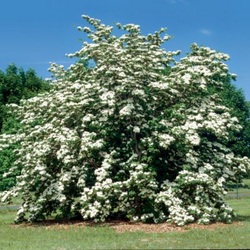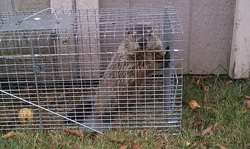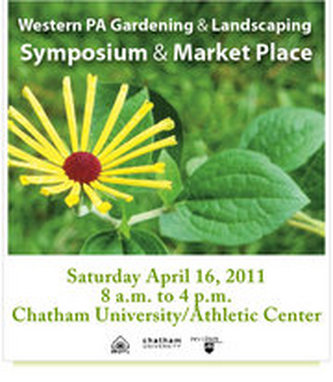 This is the idea. As the outer corner focal points, we narrowed our Collins corners tree choice to Cornus kousa 'Milky Way.' Milky Way dogwood has a height of about 20 feet, and a spread of about 15-20 feet, with a broad columnar shape, eventually widening at the crown to a more horizontal habit, and the specimens we selected branch low on their trunks. It features white flowers, red fruit, and dark green summer foliage which turns to a good wine color in the fall. This cultivar was introduced by Wayside Gardens for the 2007 season. It was selected for its abundant, long-lasting, and showy blooms, followed by a heavy crop of large, attractive, strawberry-like fruits (loved by birds). It also features very ornamental bark. The vigorous tree flowers in June. It is adaptable to full sun and most soils, and is resistant to many pests and diseases, including Anthracnose. While it requires moderately evenly moist soil, once it is established this spring in our clay soil, it should be tolerant of relatively dry summer conditions. We've bought two trees from Chapon's today (plus 14 other shrubs--sadly we didn't get a discount. I hope they decide to do this in the future, either for garden clubs, and/or for Phipps members and/or for Botanic Garden members), which will be delivered next Friday, and installed by Blackridge's own Tom Fossick and his landscaping crew (412-377-2790 or 412-829-1812) shortly thereafter. We can use some help schlepping water so that we give our new trees and shrubs a good start, so if you'd like to help, please let us know.
0 Comments
The BGC corners committee is beginning the task of replacing some of the shrubs at the main entrance to Blackridge. We hope to preserve the somewhat formal look of the traditional corners while adhering to our principles of selecting low maintenance, drought tolerant, and when possible, native plants. We also hope to lighten up the look of the corners which now contain mostly heavily sheared yews and euonymus.
The guidelines the garden club is following include:·
I will feature some of the new plants we have chosen in future blog posts. Please give us your feedback here in the comments.  A little guy/gal in the summer of 2010. Disheartened by the longtime wholesale consumption of my homegrown veggies and inspired by my friend Bernie who has an entire whistling pig relocation program set up--just with her own pigs (she even tags them--LOL), I set up a Havahart trap last summer, and baited it with juicy organic (!) apples. I caught two rats (shudder), one squirrel, and, finally, one little groundhog. S/he wasn't the only problem, as it turned out--just the most naive, I guess. On Easter Sunday, I saw another chubby little hog calmly and quite proficiently climbing over my garden fence and going under my storage shed. I brought out the trap, and it's still there--empty. I probably have to change out the bait, as Bernie tells me they like fresh produce. I guess they like it really fresh, because I notice they take one bite out of each of many tomatoes, instead of just eating a few entire fruits. After one is bitten into, they snub it. Bernie also tells me that woodchucks have a winter home and a summer home, so I guess for hogs, my shed is like a rental in the Hamptons. I am determined to keep as many of my own tomatoes as I can, so please send me any tried and true tips on groundhog control. Trap Updates
4/29/11: One scared little baby bunny 5/19/11: Hog 5/21/11: Raccoon 5/24/11: Another 'coon (trap wasn't even baited!) 5/26/11: Another hog (no bait!) What are you finding in your planting beds as you venture out this spring, and what's popping into your mind? Here are some of my brain droppings (HT: George Carlin, RIP!):
I can go on in this fascinating manner forever, but I'm more interested in what you have to say, Blackridge gardeners and friends!! What are you looking forward to picking up at our upcoming plant auction? What looks good in your spring garden, and what doesn't? What have you learned over the winter? What bargains are you finding in the nurseries? Do tell. There isn’t a common answer to the common question, “When should I prune my hydrangea?” because there are numerous species of hydrangea. Among the most popular types in our area are:
Hydrangea macrophylla (bigleaf hydrangea) is sometimes easy to recognize because its flower color changes with the soil pH: blue in acid soil; pink in alkaline. The leaves are coarsely serrated and glossy, dark green. H. macrophylla also include the lacecap hydrangeas, whose flowers look like a circle of unopened buds surrounded by open petals. Bigleaf type hydrangea set their flower buds during late summer to early fall (i.e., bloom on old wood.) Pruning bigleaf hydrangea in the spring or even late fall, after the buds have been set, will remove the flower buds and any chance of getting flowers that season. Bigleaf hydrangea should be pruned as soon as the flowers have faded in the summer. There are also newer remontant cultivars of H. macrophylla such as ‘Endless Summer’, which bloom on both old and new wood. This means that if the old growth is damaged by late spring frosts or by spring pruning, you will still get flowers on the new growth during the summer. Hydrangea arborescens (smooth hydrangea or sevenbark) cultivars, including ‘Annabelle’ and Hydrangea paniculata (hydrangea or hortensia) cultivars,including 'Pee Gee',have (usually white) flowers which are set only on new growth. They can be cut back immediately after flowering and may rebloom or they can be cut back in late winter or very early spring and still be expected to flower the following season. How far you cut them back is based on personal preference. You can choose not to prune H. arborescens or H. paniculata at all, but pruning makes for a neater plant and, if you want long stems for fresh or dried flowers, pruning back hard encourages long stems on older plants. Hydrangea quercifolia (oakleaf hydrangea) is a native plant characterized by its oakleaf-shaped foliage. Oakleaf hydrangea blooms on new wood and can be pruned in late winter or early spring, while dormant, to remove dead wood. If it has experienced winter dieback, prune back to below the point of injury. Hydrangea anomala petiolaris (climbing hydrangea) is a vine, not a shrub, and requires little to no pruning. Once climbing hydrangeas become established, they can grow quite vigorously and may only need occasional summer pruning to stay in bounds. 2011 Western Pennylvania Gardening and Landscaping Symposium
Co-sponsored by Phipps Conservatory and Botanical Gardens, Penn State Cooperation Extension and Chatham University Click here for more information/schedule Saturday, April 16 Chatham University BGC President Nancy Del Presto and I spent some time (and money) at the Marketplace at the symposium this morning, and had a wonderful time! We met up with several of our BGC speakers from this year's programs--Jim Edson of Bartlett Tree Experts, Katie Werner of Phipps Conservatory and Botanic Gardens, and Kathryn MacGregor of Sylvania Natives--plus one of our colleagues from neighboring Churchill Garden Club. We also found some great new sources for plants, including DJ's Grenhouse from Mercer County, PA. I plan to register for the symposium itself next spring. (This year was just too nutty!) I'll post more deets later, but I wanted to mention it now while it was fresh in my mind. Highly recommended! The members of the Blackridge Garden Club were saddened at the news of the passing away of one of our cherished members, Kay Bishirjian, on Tuesday, April 5, 2011. Kay was an important part of our organization. We will miss her hard work, her good sense, and her warm personality, and we extend our sympathy to Kay's family.
Our BGC President, Nancy Del Presto, remembers Kay: "Although Kay was a member for a relatively short time, she will be remembered as a very smart, capable, and tireless worker who always had a smile and a kind word for everyone. Kay joined the Garden Club soon after presenting a still-memorable program to the membership. After joining she volunteered for the very daunting program committee and her fresh, clever contributions were reflected in the year's interesting speakers and programs. Kay will be remembered, too, for her ever-ready smile and her infectious energy. We will miss her." Here is a copy of her obituary from the Pittsburgh Post-Gazette at http://www.legacy.com/obituaries/postgazette/obituary.aspx?n=kathryn-oliverio-bishirjian-kay&pid=150073679. KATHRYN OLIVERIO "KAY" BISHIRJIAN: On Tuesday, April 5, 2011, Kay Bishirjian, age 83, after a valiant effort to recover from surgical complications, passed peacefully. Kay was born and raised in Fairmont, WV and has lived in Churchill since 1963. She was a caring, devoted, loving person of high character and integrity and the beloved: daughter of the late Luigi and Elizabeth Oliverio; wife of the late Charles H. Bishirjian, mother of Charles A. Bishirjian (Patty Knapp), sister of Mary Ellen Newman, Madeline Oliverio, Dorothy Oliverio, the late Grace Birmingham, Violanda Burns, Anthony Oliverio, sister-in-law, aunt of ten nieces and nephews, and friend and colleague to many. Kay will be deeply missed by her family and friends and serves as an inspiration for those who are left behind. Friends will be received at WOLFE MEMORIAL FOREST HILLS CHAPEL (3604 Greensburg Pike, Pittsburgh, PA 15221) from 1 to 4 and 6 to 8 p.m. this Friday. A Mass of Christian Burial will be celebrated at 9:30 a.m. on Saturday at Saint John Fisher Catholic Church in Churchill. Donations may be made to: Catholic Charities USA (Catholic Charities USA P.O. Box 17066, Baltimore, MD 21297-1066; ); or Saint John Fisher Church (33 Lewin Lane, Pittsburgh, PA 15235). Send condolences at post-gazette.com/gb We are hoping that our website will become a resource for all of our Blackridge Garden Club members and our friends, so send us your thoughts about our features such as "Garden Gem of the Month" which you will find on our Home and Archives pages.
We would also love to feature more (and better, if you can imagine that being possible) photos of our garden club events, so send those our way, too. Next month will be the first completely digital issue of the Blackboard, so look for our features on the Blackridge Civic Association website, as well as on the pages here. |
Author,
|
Copyright © 2020. All web site design, text, graphics, the selection and arrangement thereof, and all software are Copyright protected under the copyright laws. Any use of materials on this website, including reproduction, modification, distribution or republication, without the prior written consent of Blackridge Garden Club, is strictly prohibited.


 RSS Feed
RSS Feed